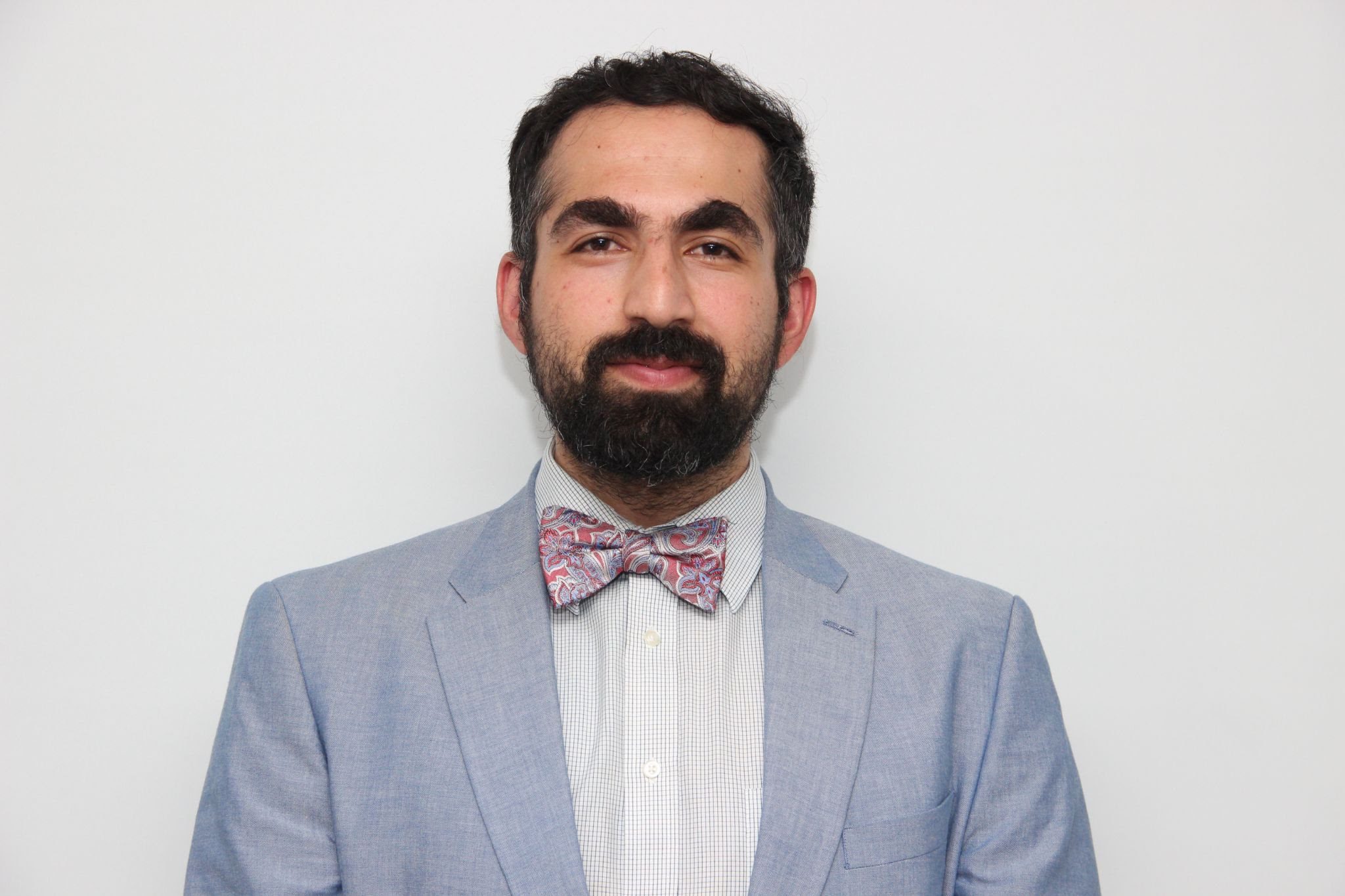
The innate human curiosity and thirst for knowledge have driven us to growth and prosperity for centuries. Yet, after each discovery, we’re left thinking, “What’s next?” “Are there more avenues to explore?” “Where’s the true final frontier?” Such an instinct will ensure humanity’s growth and preservation for many years to come.
Although resounding breakthroughs are the ones that make the news or the first page in the papers, smaller but sometimes more applaudable progress is made every day, and we must bring to the spotlight medicine’s unsung heroes. Their unshakeable dedication and unyielding patience were the seed that was always going to bring copious fruit to the field of medicine.
“I always wanted to be a doctor […] When I started primary school, from that point I had in my mind that I would become a doctor and that never changed.” These are the words of Dr. Syed Bukhari, MD, a researcher from the University of Pittsburgh Medical Center, who has received the ANSC (i.e., American Society of Nuclear Cardiology) 2020 Young Investigator Award in Clinical Science for his abstract, “Development and Validation of a Diagnostic Model for Transthyretin Cardiac Amyloidosis.” Through his solid research and deserved recognition, Dr. Bukhari strives towards bringing more awareness towards this not only misdiagnosed disease but also underdiagnosed” cardiac disease.
Acknowledging the necessity to spread the word on his mission, we at Top Doctor Magazine had the honor and the pleasure to interview Dr. Bukhari himself and decode cardiac amyloidosis through his wisdom and encyclopedic wealth of knowledge. Therefore, join us in today’s learning quest, and we will explain the ins and outs of this under-researched disease, from causes and symptoms to available avenues to amelioration!
First Steps into the World of Cardiac Amyloidosis
Cardiac amyloidosis (or “stiff heart syndrome”) is a disorder stemming from amyloid proteins (i.e., liver proteins that carry thyroid hormone and vitamin A in the blood). Due to various reasons (e.g., the aging process, genetics, etc.), these proteins create deposits in the heart tissue (or other organs), thus impeding the heart from relaxing. This process, in turn, hinders the heart from accumulating and pumping enough blood to the body.
Hence, patients with cardiac amyloidosis experience symptoms akin to heart failures, such as shortness of breath and constant fatigue. Moreover, the heart itself begins to work at a lower capacity, resulting in a condition called bradycardia (i.e., slow heart). Unless treated, cardiac amyloidosis can prove fatal.
Dr. Bukhari further discusses cardiac amyloidosis by mentioning the two faces of this disease: immunoglobulin light chain amyloidosis (localized in the patient’s bone marrow) and transthyretin amyloidosis (localized in the heart tissue). Due to its complexity, the latter especially interests Dr. Bukhari, who sees more transthyretin amyloidosis patients every day. As he shares with us, “Because it’s a more specialized field, people prefer sending patients to specialized amylose centers for the diagnostic workup, treatment, and follow-up.”
How Common Is Cardiac Amyloidosis?
Up until the last few years, cardiac amyloidosis was considered a rare disease due to poor testing. However, as Dr. Bukhari tells us, the real numbers are bewildering. “We found that around 20% of our patients who are hospitalized for congestive heart failure, especially above the age of 70, suffer from the amyloid disease. And the reason is, it’s not a rare disease anymore.” The past poor numbers lie in the applied testing methods, mainly biopsies, which older patients tend to avoid.
Today, however, physicians are much better prepared to detect this disease ahead of time. The merit falls on the pyrophosphate (PYP) scan. This nuclear test employs the Tc99m-PYP radioactive agent, which detects the amyloid protein or other abnormal antibodies present in the heart.
The PYP scan enjoys sustained popularity amongst physicians, primarily due to its effectiveness and noninvasive approach (unlike biopsies, the Tc99m-PYP agent is delivered intravenously (IV)). This innovation allowed physicians to bring more cases of cardiac amyloidosis to light and understand the disease’s pervasiveness. As Dr. Bukhari explains, “With the advent of this noninvasive testing, we found that the prevalence in the community is far higher than we anticipated.”
Cardiac Amyloidosis Treatment
The research behind cardiac amyloidosis derives its urgency from the disease’s irreversible trait. Unfortunately, the current treatment options do not go further than alleviating its symptoms, as Dr. Bukhari confesses. “The available therapies stop the further progression of the disease; they do not reverse the disease. Whatever has been deposited in the heart has been deposited. […] (i.e., Current medicine) stops the step in which the protein becomes unstable.”
However, the odds for patients with cardiac amyloidosis improved drastically once Tafamidis, the first FDA-approved oral medication for the age-related amyloid disease, was released in 2019. Tafamidis acts as a stabilizer on TTR (i.e., transthyretin), a protein responsible for transporting thyroid hormones and vitamin A to specific organs, impeding it from breaking down and converting into amyloid protein. Therefore, less amyloid protein in the heart tissue is synonymous with reduced heart failure risks and hospitalization and improved survival chances for patients.
How Do Patients with Cardiac Amyloidosis Fare against COVID-19?
As the Delta COVID-19 variant runs amok throughout the country, we were curious to learn what coronavirus means for cardiac amyloidosis patients. Right away, Dr. Bukhari warns patients to always be on the lookout for COVID-19 since their hearts are already weakened and less capable of tackling the virus. “A normal heart has the capacity of recovering pretty quickly, but unfortunately, these hearts that are already very thick, very stiff and are going through a lot, like even under normal circumstances, they’re not working efficiently.”
Since we cannot predict the COVID-19 disease’s evolution, it all boils down to the virus’ behavior. As Dr. Bukhari further explains, “A lot of times, COVID-19 does impact the heart, and it causes inflammation because COVID-19 affects those receptors in the heart, also the ACE receptors. So it can cause inflammation in many circumstances.” However, as long as COVID-19 does not attack the heart tissue, cardiac amyloidosis patients are not significantly disadvantaged compared with healthy patients. With proper care, they will see the end of the COVID-19 disease.
Detecting Cardiac Amyloidosis through Links with Other Diseases
Assessing symptoms is frequently the most straightforward way towards disease detection. However, what happens when symptoms paint a blurry picture, inconsistent with the patient’s medical history? For example, as Dr. Bukhari suggests, “someone having bad heart failure without a good cause to explain that heart failure, without any underlying coronary artery disease.” Therefore, Dr. Bukhari advises us to look for other diseases and their symptoms, such as high blood pressure, hypertrophic cardiomyopathy (i.e., muscle heart thickening), and aortic stenosis (i.e., narrowing of the aortic valve opening).
Furthermore, cardiac amyloidosis might be wearing the mask of other diseases, surprisingly unrelated to cardiac diseases. For example, patients with a history of bilateral Carpal tunnel syndrome are at risk. Why? As Dr. Bukhari fascinatingly explains, “before this amyloid disease starts depositing in the heart, it starts to deposit in the tendons; it’s very interesting. How and why does this happen? We don’t know yet.” Add heart failure symptoms into the equation, and you get a solid cardiac amyloidosis sign. “Concomitant heart failure symptoms should raise the alarm in our minds about the amyloid disease.”
A Parting Reminder
Dr. Bukhari’s insights on cardiac amyloidosis are essential in enriching our understanding and raising awareness on cardiac diseases, which took almost 18 million people in 2019 alone. Such numbers prompt Dr. Bukhari and other cardiovascular physicians to stress once more the gravity of a healthy lifestyle and constant exercise. “It’s really important to tell them (i.e., the patients) why it’s important for their health, why they have to do at least 30 to 45 minutes of exercise every day, at least brisk walk every day, why they don’t have to smoke, why they have to take care of their diets.”
Here at Top Doctor Magazine, we can only hope that Dr. Bukhari’s dedication and patience will lead to more relevant discoveries in the fight against cardiac amyloidosis. If you’re curious to consult his award-winning article, make sure to check out the following link.





0 Comments